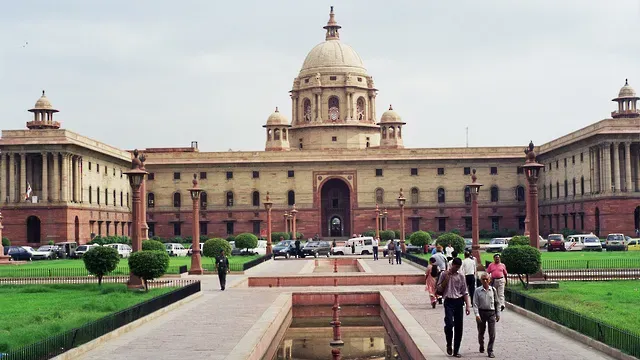The Weekend Read: Cities are the place to start
In conversation with IEA's Ghislaine Kieffer and Ramit Debnath

Welcome to this weekend’s edition of Lights On, a newsletter that brings you the key stories and exclusive intel on energy and climate change in South Asia.
If you are not a subscriber, you can sign up below, for free, or you can support my work by purchasing a membership:
With fewer than 100 days to go to the next round of UN climate talks in Glasgow, the planet is facing an unprecedented streak of extreme weather events hitting Europe, Asia, America and beyond; it’s a momentous time for both climate diplomacy and disaster response.
COP26, also known as the ‘Ambition Summit’, comes at the end of the five-year bracket stipulated by the Paris Agreement, a time for countries to meet their initial pledges and come back with more ambitious ones.
As the November date comes closer, scientists are adding fresh research to countries’ policymaking toolboxes to help them ramp up their climate ambitions. At the same time, this season’s deadly floods have highlighted the need to rethink existing infrastructure so it can withstand similar disasters that are all but certain to occur again.
Cities are the place to start. Expanding clusters where people live, consume energy and produce the highest amount of emissions all close to each other, cities are also the riskiest place when disasters strike, because they expose a higher number of people to collapsing buildings and failing infrastructure. To get a scientific perspective on the problem, I talked with computational social scientist Ramit Debnath and policy analyst Ghislaine Kieffer, who both contributed to a new report by the International Energy Agency on the role of cities in a net zero future.
Lights On: Why is it important to look at cities specifically when it comes to planning the decarbonisation of an economy, as opposed to, for example, industrial clusters?
Ghislaine Kieffer: More people than ever before are moving towards cities, so their role in reducing global carbon emissions is increasing. Cities already account for more than 50 percent of the planet’s population, 80 percent of its economic output, two-thirds of global energy consumption and more than 70 percent of annual global carbon emissions.
By 2050, more than 70 percent of the world’s population will live in cities, which will lead to a massive demand growth for urban energy infrastructure and carbon intensive materials such as steel and cement. Our research suggests that we can significantly reduce the emissions coming from construction materials by mid-century, including halving steel and cement. If we change the way we design them, and the materials we use, tomorrow’s cities represent a unique opportunity for carbon-lock out, namely the ability to stave off carbon emissions trapped in an industrial cycle using alternative technologies. For example, by shifting electricity generation from fossil fuels to renewable energy.

What are the emissions benefits that can realistically be achieved by targeting cities specifically, beyond low carbon materials?
Kieffer: We found that smart urban design can reduce the average resident’s carbon footprint by up to 60 percent by shaping lifestyle choices and influencing day‐to‐day behaviour. One easy measure is to create more walkable paths across the city, or increase greenery to mitigate heat. A more walkable city can in turn incentivise more people to ditch the car.
Overall, taking action in cities could reduce emissions from urban buildings, materials, transport and waste by nearly 90 percent by 2050, compared to a business as usual scenario. At the same time, cities can be incubators for innovation. A concrete example of new technologies already in use, especially in smart cities, is Geographic Information Systems, or GIS, which helps with data analytics and the monitoring of remote assets.
In India, urbanisation will drastically reshape future energy consumption patterns. By 2030, the country is expected to add the equivalent of seven cities the size of Mumbai, which counts 20.6 million residents. Some three-quarters of the anticipated building stock in India in 2040 has yet to be constructed, and this trend will drive up energy consumption in order to produce the steel, cement, aluminium and other materials. But it also creates an opportunity for India to impose more stringent efficiency standards on the buildings sector and cooling appliances for example, with the focus on keeping residential electricity demand in check.
What are the aspects that Indian planners should focus on? Are there any specific sectors, strengths and vulnerabilities?
Ramit Debnath: There are three trends that underpin building energy demand in India, which are explained in our India Energy Outlook 2021. First, new constructions are increasingly being concentrated in urban areas, making urbanisation a key driver for material demand; second, informal settlements are progressively being replaced by new buildings that use modern and energy‐intensive materials such as bricks, cement and steel. Third, there has been a steady growth in appliance use, particularly cooling, which drives the biggest uptick in electricity demand in the buildings sector, as more people add air conditioning to their homes.
Indian planners should focus on these three aspects and bring in low-carbon and nature-based solutions and materials such as super efficient fans and LED lighting; energy efficient air conditioners and appliances; passive housing design, as well as replacing cement and steel with low carbon options like red-clay bricks, earthen or roofing tiles.
The report calls for smart urban planning, and suggests leveraging a wealth of connections and sensors to help plan the energy systems of the future - can you tell us more about how this would work?
Kieffer: By 2024, an anticipated 83 billion connected devices and sensors will be creating large, diverse datasets on a wide range of topics, including energy consumption, air quality, and traffic patterns. By increasing the connectivity of buildings, appliances, equipment and transport systems, digitalisation provides new opportunities beyond those possible when urban energy end uses remain disconnected. In buildings, for instance, digitalisation enables the analysis of data from various sources such as heating, ventilation, air conditioning, motion sensors, and weather to create real-time insights and forecasts that can be used to optimise energy use while maximising comfort.
Unfortunately, the digital divide means more than unequal access to high-quality internet connection. To create resilient communities, cities need to ensure vulnerable and underserved groups have the knowledge, tools and skills to benefit from advanced technologies. Initiatives could include improving access to communication and energy services or expanding access to efficient appliances and retrofit opportunities.
How would such ideas work in India, where significant parts of megacities like Delhi or Mumbai are informal settlements and may not be as well integrated with the city’s energy systems or internet coverage?
Debnath: The Bureau of Energy Efficiency has a programme called national energy end-use monitoring that is focussing on energy efficiency of residential households across 13 cities and 5 climatic zones of India. Here, digitalisation is at work to inform energy savings at the household level.
Beyond this, tools like natural language processing and machine learning are already informing policy making informally. Early studies show how collective intelligence, a process where people create new data through polls, Twitter feedback, crowdsourcing surveys and other digital tools, helped understand faults in electricity distribution in slums. While in this case we don’t have explicit evidence on the changes it brought, collective intelligence can become a very powerful tool in informal settlements where the penetration of smartphones is particularly high. India reportedly had 1.17 billion subscribers in 2019, across the socio-economic classes, and digitalisation can provide a huge opportunity to address challenges associated with inequality and inequity.
More generally, what are the key differences between the challenges faced by cities in industrialised countries and cities in the developing world?
Kieffer: Industrialised cities face the challenge of reducing their high levels of emissions in the context of stable or declining energy consumption. Newly urbanising areas in the developing world face the challenge of leapfrogging the high carbon trajectory of industrialised, mature cities while providing energy access and services to large populations of new urban dwellers. In the IEA’s Net Zero roadmap, demand for appliances and cooling equipment continues to grow, especially in emerging markets and developing economies. Here, 650 million air conditioners are added by 2030 and another 2 billion by 2050, which makes appliance efficiency [tools] such as minimum energy performance standards critical.
To put this into a global perspective, by 2040 cooling is expected to account for 30 percent of peak electricity demand in ASEAN countries, mostly concentrated in urban areas, up from around 10 percent today. An additional 200 GW of capacity, roughly equivalent to Germany’s total current electricity capacity, will be needed to meet this demand.
In March 2018, a C40 report entitled Consumption-based GHG emissions of C40 Cities estimated the carbon emissions for the food, clothing, electronics, air travel, construction materials consumed by city residents but produced outside city limits. The study found that two-thirds of consumption-based GHG emissions are imported from regions outside the cities. Wealthy "consumer cities" such as London, Paris, New York, Toronto, or Sydney that no longer have large industrial sectors have significantly reduced their local emissions. However, when the emissions associated with their consumption of goods and services are included, these cities’ emissions have grown substantially and are among the highest in the world on a per capita basis.
These conclusions highlight the risk of placing too much emphasis on city-level decarbonisation strategies focused exclusively on production-based emissions. Instead, they point to a necessary change in paradigm: interrogating the boundaries of “urban” emissions, notably by integrating consumption-based emissions, especially in cities that are shifting from producer to consumer city status. This may help create a more useful framing to look at the distinctive challenges faced by cities in industrialised countries and cities in the developing world.
A new study in Nature traces future patterns of migration from rural India to major cities like Mumbai. It says that as climate change worsens, more people will be forced to flee their homes, but their urban destinations will also be extremely vulnerable to climate extremes. How should we redesign Indian megacities to make space for these internal climate refugees? And what are the risks if we fail to do so?
Debnath: Indian megacities should redesign themselves with a higher level of resilience from extreme climatic events. They would need climate finance mechanisms that encourage adaptation even in the poorest regions. Strengthening of social housing programmes to alleviate slums with better quality of life and climate resilience will become important in near and mid-term adaptation measures.
Another step will be to formalise some parts of the informal economy. Especially with the onset of the digital economy there are lots of opportunities for securing financial infrastructure for the poorest population groups. For example, Pune managed to formalise informal trash ‘pickers’, who were often very poor migrants and would sort through the city’s waste and sell what they could. The city embedded the pickers into its waste management system. There is a need for improving how vulnerabilities are measured in India’s cities and how prepared the cities are today.
The risks are devastating because [climate change] could push millions of people into extreme poverty, reversing years of progress towards human development.
That’s all for today! If you like what you read, hit reply and let me know what you would like to see more of. Ask me anything, I always reply.



